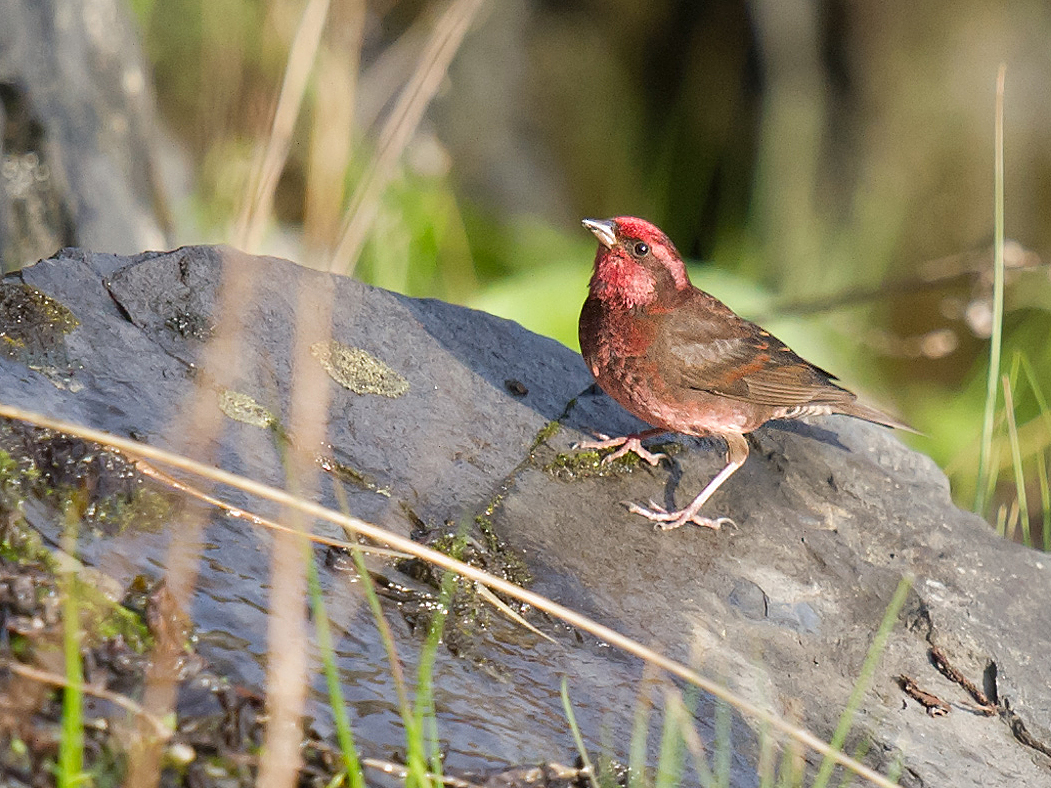
Dark-breasted Rosefinch Procarduelis nipalensis ranges from western Himalayas to Vietnam, with nipalensis from southern Tibet to northwest Yunnan, western Sichuan, and southern Gansu. HABITAT Mixed oak and conifer forests, also scrub and alpine pastures, breeding from 2500–4400 m (8,200–14,440 ft.); lower in winter, when often in thickets near cultivated land. ID & COMPARISON Male has bright pink forehead and supercilium behind eye and a broad, maroon-brown eyestripe that curves downward to nape, which, along with rest of upperparts, is also maroon-brown. Mantle and back have indistinct blackish streaking. Tail, flight feathers and center of greater coverts brownish-black, with maroon-brown tips to latter forming indistinct wingband; blackish tertials edged buff-white. Cheek, chin, and throat bright pink; maroon-brown breast band; belly pinkish; undertail coverts whitish with black centers. Female lacks supercilium, being mainly dark brown above with diffuse streaking on mantle and buff-brown on rump and uppertail coverts. Buffish-brown wingbars and tips to tertials and olive-brown underparts, pattern of undertail coverts duller than male. Male distinguished from Dark-rumped Rosefinch Carpodacus edwardsii by pink forehead and belly and darker breast and upperparts, with only faint streaking on the latter. Male distinguished from Vinaceous Rosefinch Carpodacus vinaceus by maroon-brown breast band and eyestripe and lack of white tips to tertials. In both Dark-rumped and Vinaceous, male’s supercilium reaches front of eye, but not in Dark-breasted. Dark-breasted also has more slender bill than Dark-rumped and Vinaceous. Female Dark-breasted almost uniformly dark grey-brown, with two warm buff wingbars and tips to tertials on otherwise blackish wings. Female has light streaking on crown, broader blurry streaks on mantle and back, and blackish chevrons on whitish undertail coverts. Female Blanford’s Rosefinch Agraphospiza rubescens is paler and has reddish rump, stouter bill, and less obvious wingbars and tips to tertials. BARE PARTS Rather thin and pointed bill grey, feet pinkish-brown. VOICE Calls include a melancholy double whistle and monotonous chirps. — Craig Brelsford
ACKNOWLEDGEMENTS
Daniel Bengtsson served as chief ornithological consultant for Craig Brelsford’s Photographic Field Guide to the Birds of China, from which this species description is drawn.
